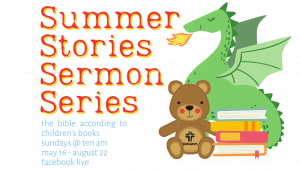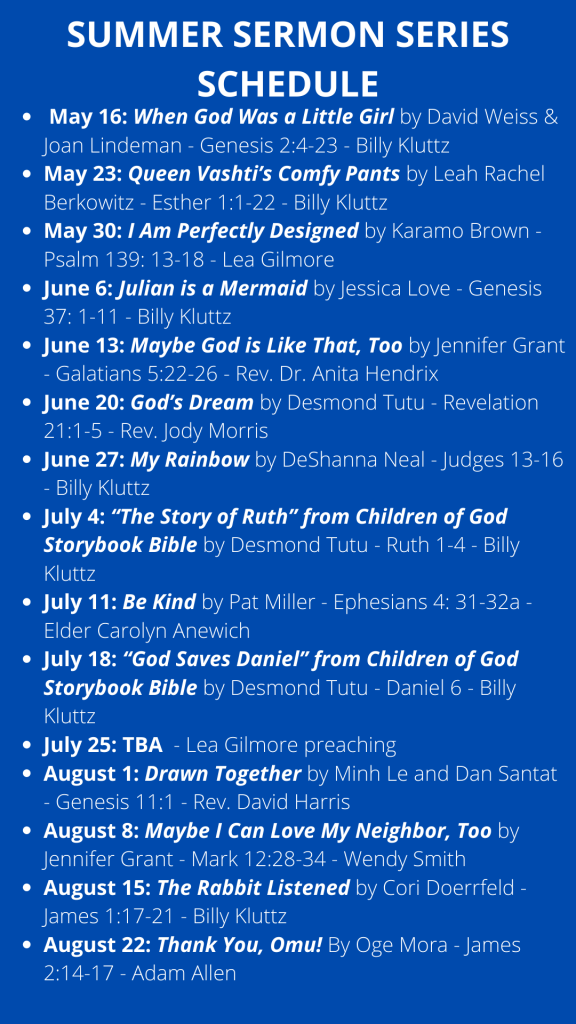
From May 16 to August 22, Govans’ Summer Sermon Series will feature a modern children’s book each week in conversation with a story from Scripture. Get ready for these exciting Sunday sermons with an Introduction to Children’s Literature by Govans’ own Wendy Smith.
An Introduction to Children’s Literature
by Wendy Smith
Throughout the world, there is evidence of storytelling in just about every culture. Before written language, stories were used to pass down ideas and historical knowledge. Not all of the stories were for the entertainment of children, but some were.
With the advent of the printing press and the publication of books starting in the 1400s, books for adults began to be available for wider and wider usage, among these books was the Bible. While the Bible was often used as a text for teaching children to read, it was not changed in any way for its use with children. In the English-speaking world, books for children first became available in the late 1700s, first appearing in England published by John Newbery. Newbery believed in hard work being rewarded and his books reflected this philosophy, didactically telling children how to behave.

Fast forward to the twentieth century in the US and we can see the evolution from didactic books, still largely in place in the mid-century to the end of the twentieth century. Books for children in the 1950s had other common trends as well. Most children’s books showed only white children in middle class settings and the children had no real-world problems, no families of divorce, no disabilities, no illnesses, etc. Gradually over the last five decades of the 1900s and into the 2000s, books for children began to represent the world we live in more realistically. Girls came to be more equally represented in books and BIPOC gained a higher level of representation, although we still find discrepancies between the representation of a population in our country and the representation of that population in children’s literature. Children’s books now tackle a myriad of issues from obesity to physical and cognitive disabilities to families with two mothers or fathers.
The books chosen for our summer series show children all around the world, with a fair representation of gender, ethnicities and cultures. This is true for the characters of the books chosen as well as for the authors. Although publishers of children’s literature, still largely the domain of white men, have opened up publication to more and more literature representing the world as it currently exists, there is still a long way to go. By sharing these wonderful children’s books, we hope to encourage everyone to look outside the box when purchasing books for children in your family and in your community. For example, Charlotte’s Web is an amazing book for children that continues to be beloved by almost all who read it, but is it the best book to represent the child and community we are trying to nurture?
We can find examples of Biblical principles in many places, but perhaps children’s literature is one of the easiest places to look. Again, the books we will explore this summer carry many lessons for both children and adults. In some cases, they mirror the parables of Jesus and in others, they simply and directly tell us how we should behave. As we explore these books together, we can revisit the importance of story to our lives, no matter how old we are.•